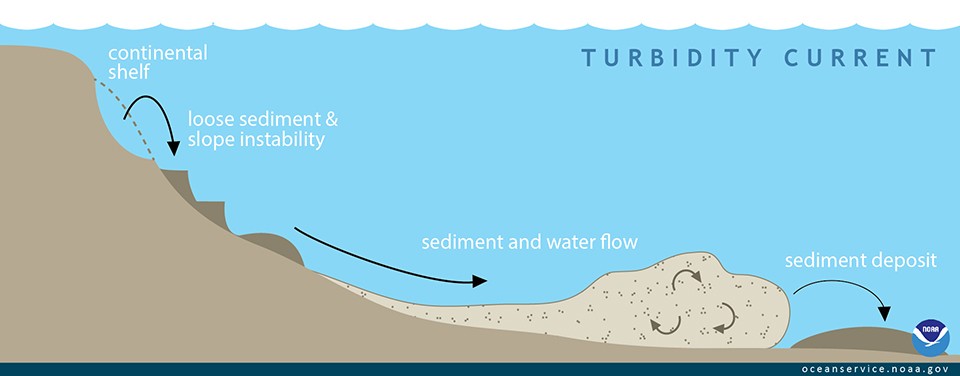What is a turbidity current?
A turbidity current is a rapid, downhill flow of water caused by increased density due to high amounts of sediment.

Turbidity currents can be caused by earthquakes, collapsing slopes, and other geological disturbances. Once set in motion, the turbid water rushes downward and can change the physical shape of the seafloor.
Turbidity is a measure of the level of particles such as sediment, plankton, or organic by-products, in a body of water. As the turbidity of water increases, it becomes denser and less clear due to a higher concentration of these light-blocking particles.
Turbidity currents can be set into motion when mud and sand on the continental shelf are loosened by earthquakes, collapsing slopes, and other geological disturbances. The turbid water then rushes downward like an avalanche, picking up sediment and increasing in speed as it flows.
Turbidity currents can change the physical shape of the seafloor by eroding large areas and creating underwater canyons. These currents also deposit huge amounts of sediment wherever they flow, usually in a gradient or fan pattern, with the largest particles at the bottom and the smallest ones on top.
NOAA scientists use current meters attached with turbidity sensors to gather data near underwater volcanoes and other highly active geological sites. Also, satellite imagery is used to observe turbidity by measuring the amount of light that is reflected by a section of water.
Search Our Facts
Get Social
More Information
Last updated: 01/20/23
Author: NOAA
How to cite this article